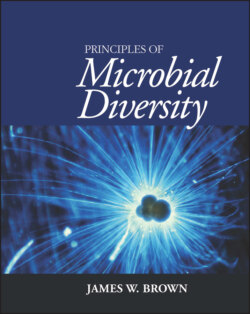Читать книгу Principles of Microbial Diversity - James W. Brown - Страница 18
Metabolic diversity
ОглавлениеMacroscopic eukaryotes are not metabolically diverse; they are either chemoheterotrophic (e.g., animals) or photoautotrophic (e.g., plants). Bacteria and archaea have a much broader range of energy and carbon sources, which can be generally divided into four broad types, chemoheterotrophs, chemoautotrophs, photoheterotrophs, and photoautotrophs.
Chemoheterotrophs obtain both carbon and energy from organic compounds. Some organisms can use a wide range of organic compounds and can either oxidize or ferment them. Others can use only a very narrow range of organic compounds and process them in a specific way. Saprophytes and pathogenic microbes are examples of this group.
Chemoautotrophs obtain cell carbon by fixing CO2. Energy is obtained from inorganic chemical reactions such as the oxidation or reduction of sulfur or nitrogen compounds, iron, hydrogen, etc. These organisms do not need organic compounds for either energy or cell carbon. Sulfur-oxidizing bacteria and methane-producing archaea are examples of this group.
Photoheterotrophs obtain cell carbon from organic compounds, but energy is harvested from light. Halophilic archaea and most purple photosynthetic bacteria are examples of this group.
Photoautotrophs (photosynthetic) obtain cell carbon by fixing CO2. Energy is obtained from light. These organisms do not need organic compounds for either energy or cell carbon. Most cyanobacteria and some purple photosynthetic bacteria are examples of this group.
